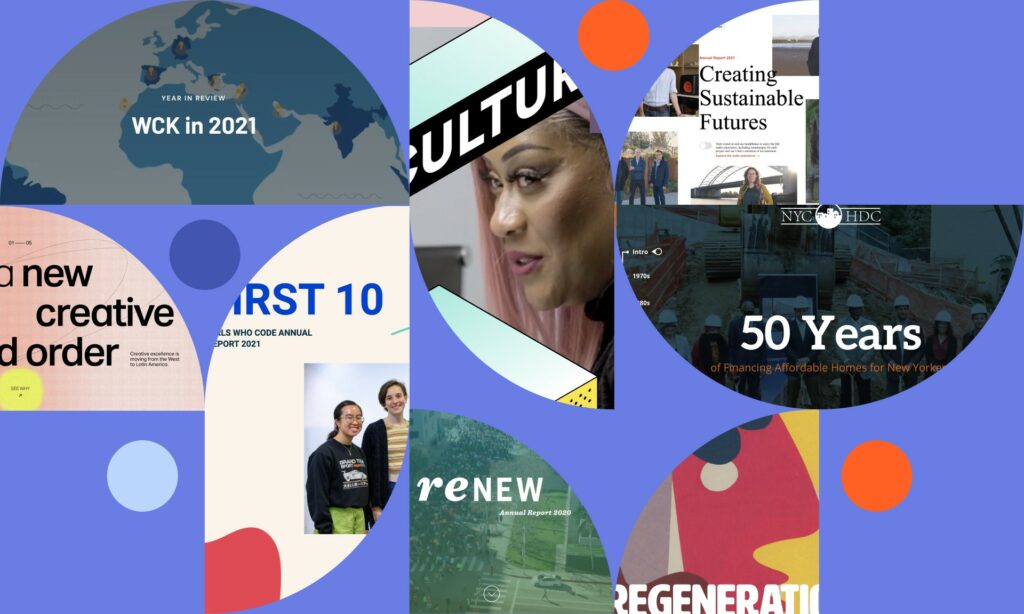
Last year, we established how a purpose-driven brand positions you externally. To revisit briefly, your brand is more than your logo—it’s the relationship between an audience and an organization. Additionally, it’s how your mission is perceived through intentional and unintentional actions. As defined by Marty Neumeier in The Brand Gap: A brand is a person’s gut feeling about a product, service, organization, or in this case, your mission. This means your brand is a breathing entity that requires care and thoughtfulness to project its value onto your audience.
Your brand is not what you say it is, it’s what they say it is.
In this post, we’ll explore how a well-crafted brand positions your organization internally and enables a priority audience segment — stakeholders — to build trust and develop fulfillment in your mission. A thoughtful and well-documented brand gives everyone the same tools to express the purpose and values of the organization. So we’re clear, the label “stakeholder” refers to anyone (inside or outside of the organization) with a vested interest in the success of your organization. For the purposes of this post, we are focusing on the internal stakeholders and developing the brand through your staff. They can be your most valuable advocates and buy-in from them is critical.
Inspire Stakeholder Trust
Keep in mind your audience is a collection of thinking, feeling, and emotional individuals. Establishing a compelling brand will allow internal stakeholders, your strongest advocates, to express your purpose and approaches with a unified voice. Over time, this practice will begin to instill trust.
Trust in your organization is bred from the consistent repetition of positive messages and actions unique to your brand. Trust takes time to cultivate and requires focus from all involved with your organization, beginning with leadership. As I mentioned previously, your brand’s DNA is wrapped in perception. Internal stakeholders must “live” the core tenets of your brand—they have to feel your authenticity. This, above all, is what will shape perceptions among your audiences.
Build Fulfillment Within Your Staff
Having a strong brand and positioning will enable your team to work from the same playbook. Placing motivators beyond a paycheck creates a culture of purpose-driven staff and contributors. 74% of employees say their job is more fulfilling when they are provided opportunities to make a positive impact through their work. People who are fulfilled by their work and mission will synthesize this effort into purpose.
So how do you discover the purpose of your brand? You have to measure. Speak with your leadership team, staff, your board, or committee in service to your organization and revisit your purpose, mission, and core values* at least once a year. Assess how their work may or may not feel aligned with the values. If it’s not, determine what can be adjusted. Engaging in casual conversations with those closest to your organization is a great way to develop your brand from the inside. Learning how they feel about your organization will give you the tools to make thoughtful decisions about how your brand is perceived and uncover any steps to realign.
*You do have core values defined, right? Of course you do! But if you need help we’d be happy to chat.
Attract and Develop Talent
As a direct benefit to improving the culture of your team and their understanding of your purpose, your organization will become a destination for other like-minded people. As the Millennial generation matures and grows to become the majority U.S. workforce this demographic will continue to seek organizations that focus on purpose over profit.
Your brand is the screenplay for your organization’s movie. Who are you? Why do you do what you do? Why should people care and be compelled to help or join you? Attracting and retaining the best talent requires them feeling inspired and engaged with your purpose. What you say, where you say it, and how you say it impacts the way people respond to you.
In Conclusion
Regardless of your mission and the societal ills you are trying correct, your brand — the sum of your purpose, mission, vision, values, and actions — will only become more crucial to define. Take the time to shape and focus on how stakeholders feel about your organization and assess it routinely.
Not to turn political, but 2020 is shaping up to be a pivotal year for this country. Climate change, strained race relations, and the widening equity gap in our education system are a few of the heady topics at the forefront of the 2020 election and the upcoming decade as a whole. Your brand is born in the bond between who you are and who your audience wants to become — not the logo on your office door.














